The pictorial guide helps you get started. There are also tips on
how to strengthen your bond with baby.
- Right latch-on
Incorrect latch-on is painful for you and frustrating for baby. Here is how to do it right:
- Brush baby’s lips lightly against your nipple until he opens his mouth.
- Allow him to take as much of the areola (brown area) as possible into his mouth.
- Jaw movement and gulping sounds ensure that he has latched-on correctly.
- Baby will stop feeding when full. If he does not stop even when there is no more milk, insert the tip of your little finger into the corner of baby’s mouth to break the suction.
- Let-down reflex
A let-down reflex is a tingling sensation that signifies a warm rush of milk soon after baby has latched on. If you do not experience this, it may be due to distractions, lack of privacy, embarrassment or anxiety about breastfeeding, fatigue or pain.
- Choose a comfortable position
Get into a position that is comfortable for you and baby. Baby’s body should be close to you and his face facing your breast. His mouth should be comfortably near your nipple and his head, neck and back in a straight line. Keep your back upright at all times; use a pillow for support if you need to.
The ‘cradle hold’
This is a classic breastfeeding position and a favourite of many mothers. It allows baby to be tummy-to-tummy with you so that he does not have to turn his head to latch-on.
- Baby’s head rests in the crook of your elbow.
- Keep baby’s back and bottom supported.
- Baby’s arms should be at his sides.
The ‘football hold’
This position is ideal if you are recovering from a Cesarean birth, are large-breasted, are nursing a premature or small baby or have twins and want to nurse them at the same time.
- Support baby’s head with your hand.
- Use a pillow to support baby’s back.
Lying down
Try this position when you and baby are both tired. If you are recovering from a Cesarean birth, this may be the only position you can try for the first few days.
- Support your head with your arm.
- Support baby with your upper arm.
- Switch breasts
Whenever possible, offer both breasts during each feed. Feed baby on the first side until he stops suckling. Remove, burp him, put him to the next side and continue feeding until he is full. You should begin the next feed with the heavier breast.
-
Burp baby
Burp baby after each feed. He may spit up milk, so keep a napkin handy. If he does not burp after 30 seconds, he probably does not need to.
- Put baby against your shoulder.
- Rub or pat his back.
Bonding with Baby
You can make every breastfeeding session a meaningful experience by creating the right environment and being emotionally present with your baby. What’s more important is the quality of your interaction with your baby during the feeding. Make loving gestures to him so that he feels valued, safe and will in turn, increase his self-esteem and confidence.

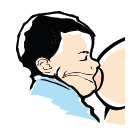
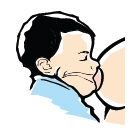
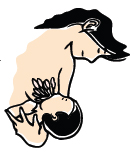
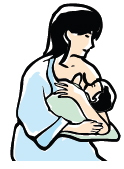
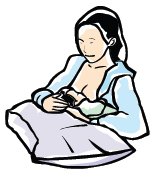








Comments